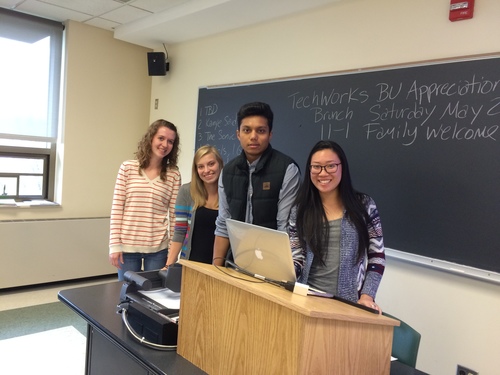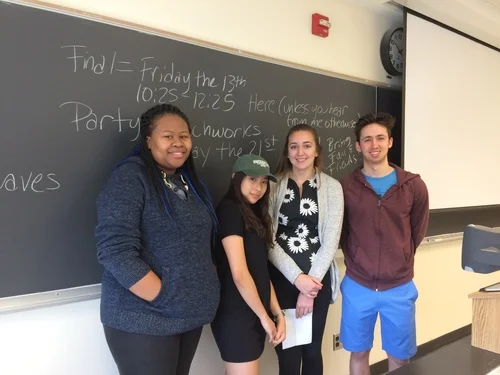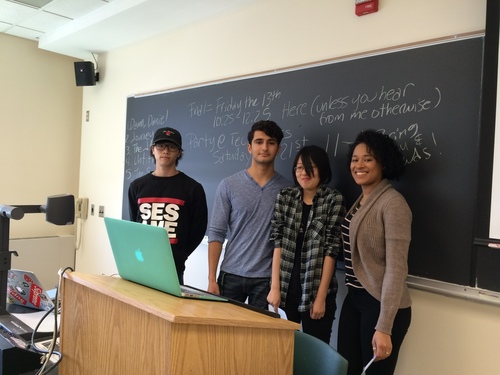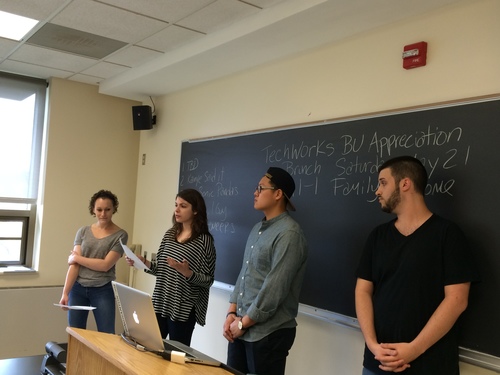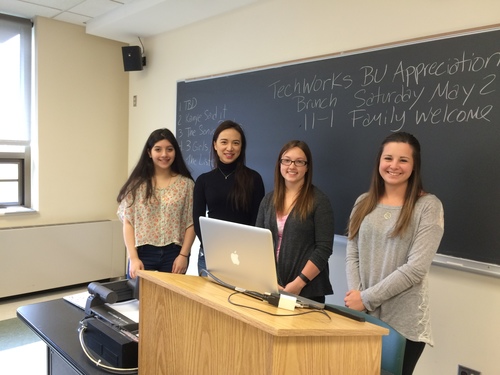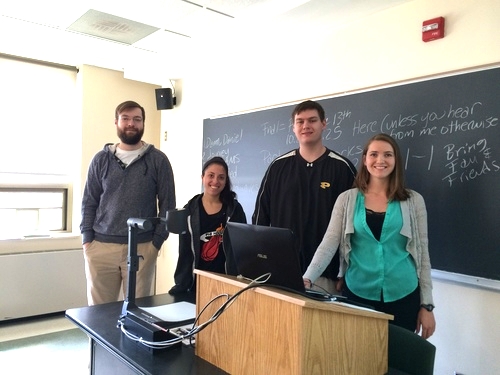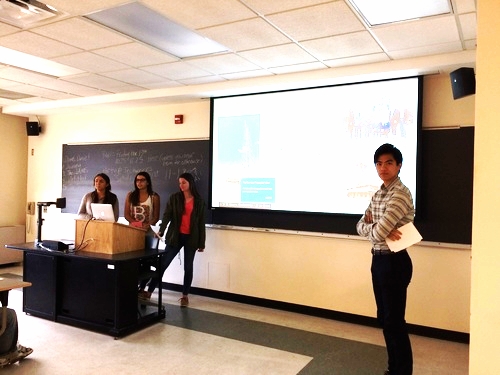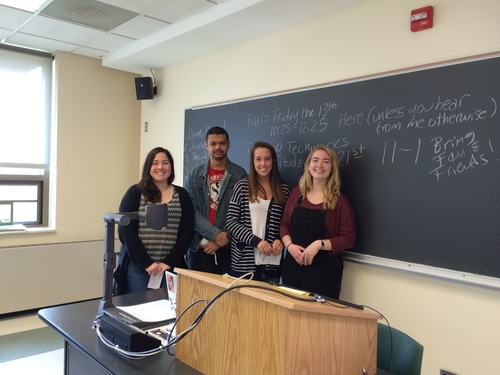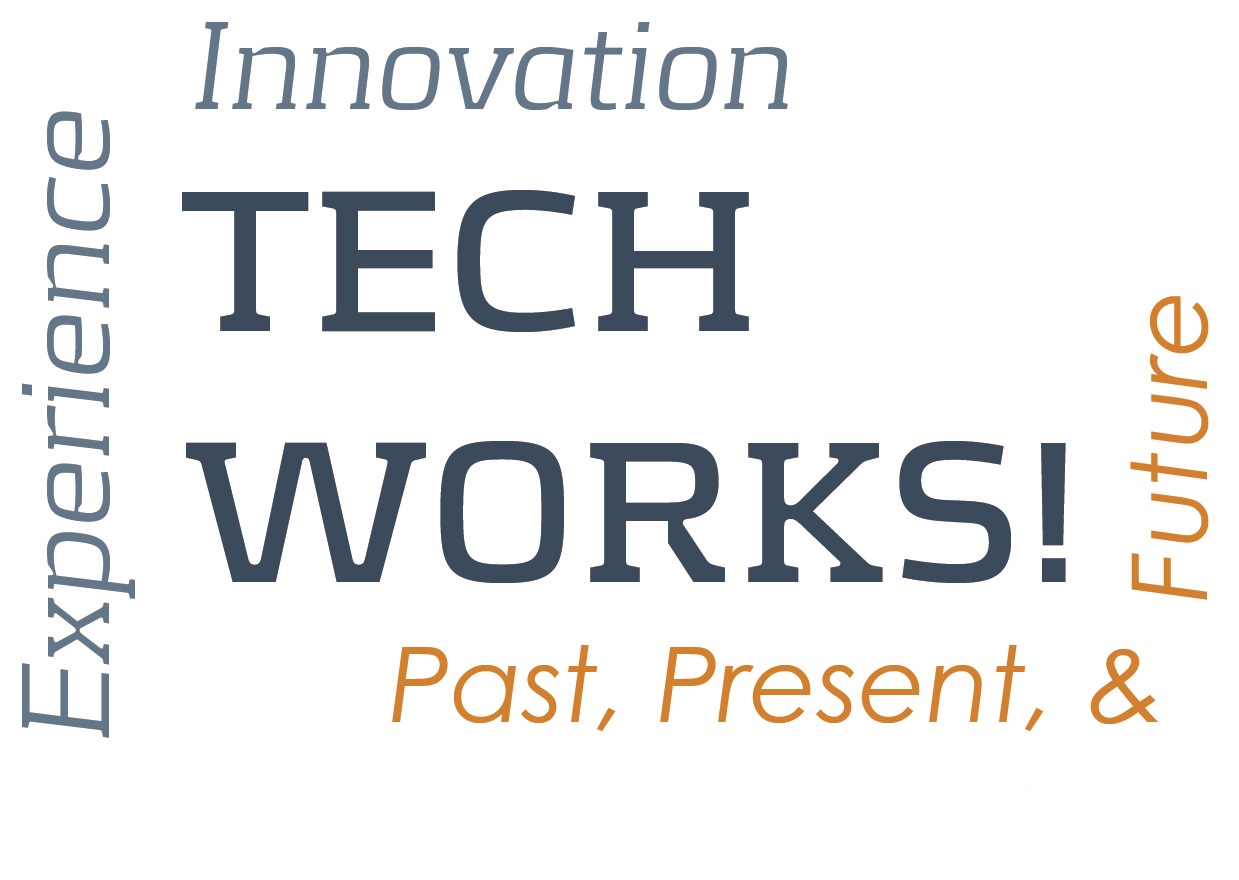by Jennifer Stoever, Associate Professor of English, Binghamton University
“Sound gives us the city as matter and as memory. In this register, the double life of cities—the way they slide between the material and the perceptual, the hard and the soft—is made audible.”
In Spring 2016, Tech Works! partnered with students from Binghamton University English Professor Jennifer Stoever's upper-level undergraduate course "How We Listen" to produce 10 unique, historically researched "Aural Postcards" from Binghamton's technological past. Students researched Binghamton's history all semester in the community and in Tech Works!'s rich archives, guided by the help and expertise of Tech Works Director Susan Sherwood.
The term "Aural Postcard" is taken from the work of sound theorist Fran Tonkiss who argues that the modern city is sonic as well as visual, and that sound offers us a unique perspective on the past as well as the present. Stoever's students were free to interpret Tonkiss's term how they saw fit, uniquely contouring it within the richly textured history of Binghamton. As a result, you will see, read, and listen 10 unique takes on the sounds of Binghamton's past and what they offer to us in the contemporary moment. Here's how one student group, the designers of one of the two McIntosh Amplifiers aural postcards, explained the philosophy behind their aural postcard.
“The idea of aural postcards can be explained as sonic time capsules. In class, Dr. Stoever passed out visual postcards from the Binghamton area that she had from long ago that depicted the area in various ways. These postcards have a front and back. The front is almost always a picture of a place that anyone can recognize if they know the place. The back, on the other hand, often has a personal note. Paralleling this, aural postcards have a similar sense of public versus private experience. The figurative front of an aural postcard involves a general soundscape of an area. This includes sounds that any person of the general public would hear at the place at hand in the particular postcard. Then, on the figurative backside, sounds are more personal. The backside can be interpreted in two different ways. The first way being that these are sounds that an individual would tune into because of his/her own experiences, preferences, or personality. The sounds may not necessarily be experienced by every listener in the given place the aural postcard depicts. The second way the private aspect can be interpreted is through the meaning behind that sounds. A sound may be heard by everyone, however certain individuals may have their own experiences that the sound evokes. For example, we may all hear seagulls “culling” on the beach and think of it as a typical sound near the ocean. However, the backside of the aural postcard would entail how a certain person would associate the sounds of seagulls as the time when he/she went on a trip with family and the warmth felt on that trip.”
In addition to creating wonderful online experiences for anyone interested in Binghamton's technological past, these projects contributed new sounds and research toward Dr. Stoever's ongoing Binghamton Historical Soundwalk Project, in concert with recent Binghamton University graduate Daniel Santos and the Binghamton University Center for Civic Engagement. The student-designed project began in the Spring of 2014 in Stoever's "How We Listen" course with a competition to create a civic engagement project that put sound studies methodology to work in intervene in a local community issue. As Daniel Santos describes the project:
“The Binghamton Historical Soundwalk Project aims to address and mend the relationship between students and yearlong residents by educating people about the history behind the city and by making both groups aware of their own listening practices and the listening practices of others, in an effort to eliminate assumptive listening/living. Through monthly group soundwalks open to all, the project will encourage dialogue between residents and students—dialogue that will hopefully work toward confronting the constructed assumptions each group has about the other. ”
Students in Fall 2015 "How We Listen" course furthered the project by performing oral histories and pitching sites to include in the final soundwalk. After Stoever, Santos, and TechWorks! Director Susan Sherwood selected downtown Binghamton as the site for the forthcoming walks, Spring 2016's students performed research in and around Water Street. Spring 2016 team photos below. Every semester, we get a little bit closer to mapping out and creating the sounds for our walk. Stay tuned!
